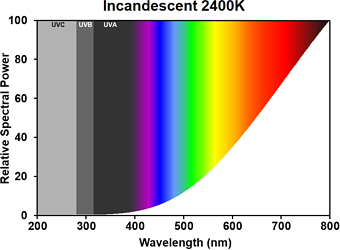
|
Beautalite / Linolite Linear Tungsten Filament |

The concept quickly grew in popularity in Britain, and is some continental lands, particularly France and Germany. In 1907 Beuttell founded the Linolite Company of New York, whose products were manufactured by the Johns-Manville company and later taken over by Westinghouse.
The lamps were produced in England by the Edison & Swan company. The original Tubolite model had a carbon filament, being replaced around 1910 by coiled tungsten filaments, and this longer "Beautalite" version. The filament is supported by a number of twisted metal wires sprung against the glass bulb, which are effective only when the lamps are burned horizontally. The ends of the bulb are shrink-sealed around platinum leadwires, and adjacent to one seal is an exhaust tip, hidden under the metal cap. The British lamps are considerably safer than the European pattern, thanks to the electrical contact being made to a small insulated disc at each end. With continental versions the entire cap shell is live, presenting an increased risk of electrocution if one end is held while the other is inserted into a lampholder.




| Manufacturer: | Ediswan | |
| Lamp Power: | 30 Watts | |
| Lamp Voltage: | 105 Volts | |
| Lamp Current: | 0.29 Amperes | |
| Cap Type: | S15s | Brass + vitrite |
| Bulb Type: | T-22 | T-7 in eighths/inch |
| Bulb Finish: | Clear | Soda-lime glass |
| Filament Type: | Coiled tungsten | |
| Atmosphere: | Vacuum | |
| Luminous Flux: | 150 lm | 12 CP |
| Luminous Efficacy: | 5 lm/W | |
| Beam Intensity: | N/A | |
| Beam Distribution: | N/A | |
| Colour Temperature & CRI: | CCT: 2400K | CRI: Ra 100 |
| Chromaticity Co-ordinates: | CCx: 0.486 | CCy: 0.415 |
| Rated Lifetime: | 1500 hours | |
| Burning Position: | Horizontal | |
| Overall Length: | 284 mm | 111/4 inches |
| Lighted Length: | 220 mm | 85/8 inches |
| Factory: | Ponders End | England |
| Date of Manufacture: | c.1911 | |
| Original Value: | £0 5s 5d (1910) | |

